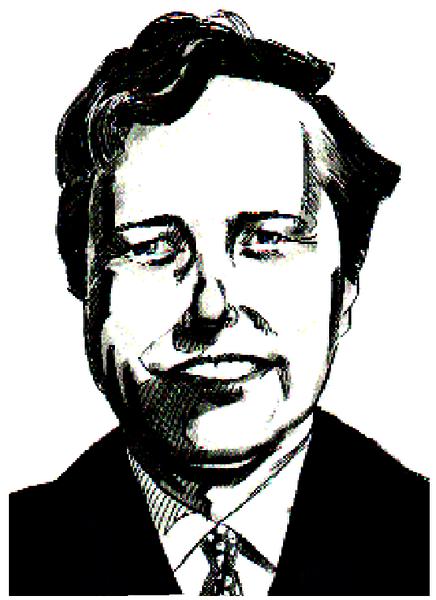With the outlook for the Suroit natural gas combined cycle project in Quebec now appearing uncertain, GE must once again look for potential alternative sites for the lead 60 Hz project for its H system gas turbine technology. GE has certainly been unlucky with its choice of lead 7H sites to date, with the cancellation of the Heritage project and now the delay and possible cancellation of Suroit. But the Canadians have been able to come up with a consolation prize.
As if to make up for the 7H disappointment, in October GE announced it had been selected to supply wind turbines for eight projects in Quebec to be placed on line over the period 2006 to 2012. And by wind standards the numbers are impressive: 660 machines totalling 990 MW (740 MW to Cartier Wind Energy and 250 MW to Northland Power), making it "the largest single award for new wind generation capacity in the history of the global wind energy industry." The solicitation, initiated by Hydro-Quebec, arises from government decrees last year calling for more wind capacity. The Canadian Wind Energy Association is projecting a Canadian installed capacity of 10 GW by 2010, compared with a current installed capacity of 372 MW, about 113 MW of which is in Quebec.
Barely two weeks later GE was able to announce that it had "secured contracts to supply more than 750 megawatts of wind turbines for new 2004-2005 projects in the US", and "received commitments for another 750 megawatts" – the total value amounting to more than $1.3 billion.
The key driver for this latest surge in wind turbine sales in the USA was of course the extension of the Renewable Energy Production Tax Credit (PTC). The PTC provides a 1.5 cent per kWh credit (annually adjusted for inflation) for power produced during the first 20 years of a wind project's operation. The latest extension (enacted by Congress in September as part of a major tax package) ensures that the PTC will remain in place until December 2005. It had expired on 31 December 2003, but is now reinstated retroactively, from that date until 31 December 2005. The American Wind Energy Association (AWEA) estimated that as a result of the extension, "about $3 billion in wind energy investments forecast over the next several years are now back on track across the country." The AWEA believes wind energy can provide 6% of US electricity by 2020, or "about as much electricity as hydropower generates today." But understandably it would like to see a long term PTC extension and a renewables portfolio standard that "will move the wind industry beyond the boom-and-bust cycles that have resulted from short-term PTC extensions in the past."
The chances are that this will happen. Even though wind power is currently an expensive way of generating electricity, particularly when the need for firm back up is factored in, and also an expensive means of carbon dioxide abatement, even when compared with, say, adding capture and sequestration to existing fossil plants, politicians, both in the USA and elsewhere seem very willing to continue to see it handsomely subsidised and talk of wind accounting for a large percentage of total generation in years to come.
In Germany, for example, the plan is still to have over 40 000 MW of wind capacity by 2030, compared with around 14 000 MW today. Some of the potential challenges posed in integrating substantial tranches of wind into an existing grid were discussed in an excellent presentation to the recent CEPSI conference in Shanghai, by E Lerch of Siemens and X Lei of XJ Electric Corp. They point out that with growing wind capacity, providing the "necessary system reserve will become a more and more expensive and complex task", while a further severe problem will be created by "uncontrolled load flows in and out of the control areas of the TNOs depending on the changing wind conditions." They worry that "in some cases the (n-1) principle of the transmission system cannot be fulfilled as a consequence of additional wind energy flows through the system."
Then there are the potential costs associated with connecting large offshore wind farms to the existing grid. According to one estimate for the German case if you factor in all the interconnecting systems that will be required for the 2500 MW of offshore wind parks planned for the German North Sea by 2010, the cost of this wind generated electricity could be as much as 2-3 times the cost of electricity from conventional sources.
However, this is a problem that Siemens will be particularly well placed to address, with its extensive experience in large scale T&D, including FACTS and HVDC, shortly to be coupled with a wind turbine manufacturer's perspective through its purchase of Bonus.
New start for nukes?
While we're on the subject of carbon free generation, within about 24 hours of George Bush winning his second term and a few days before the resignation of Spencer Abraham as Secretary of Energy, the US Department of Energy squeezed in the announcement of two very important contract awards under the Nuclear Power 2010 programme. This aims to demonstrate faster licensing for the construction and operation of new "Generation III+" nuclear power plants.
One award is to Dominion, and could result in the construction of an AECL ACR-700 Candu at North Anna, while the other is to the NuStart Energy consortium, which will evaluate the Westinghouse AP-1000 and the GE ESBWR.
A further boost for the nuclear industry comes from South Africa, with the announcement that the government has approved significant funding for the Pebble Bed Modular Reactor. This is excellent news.


